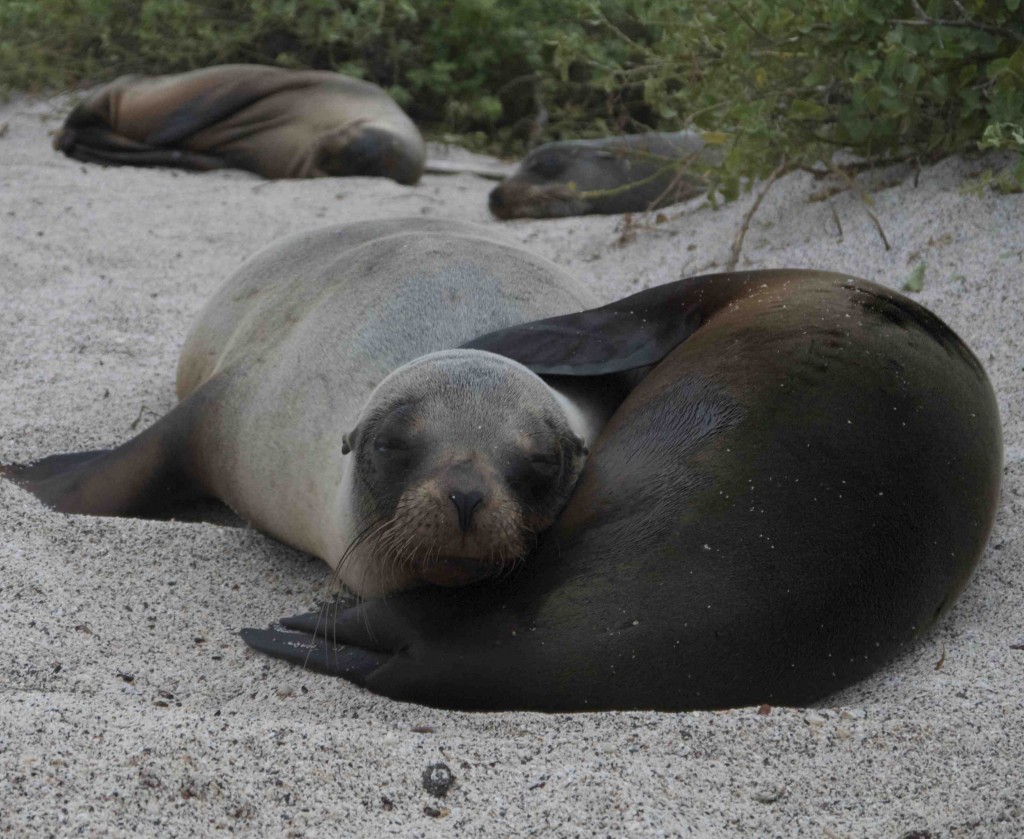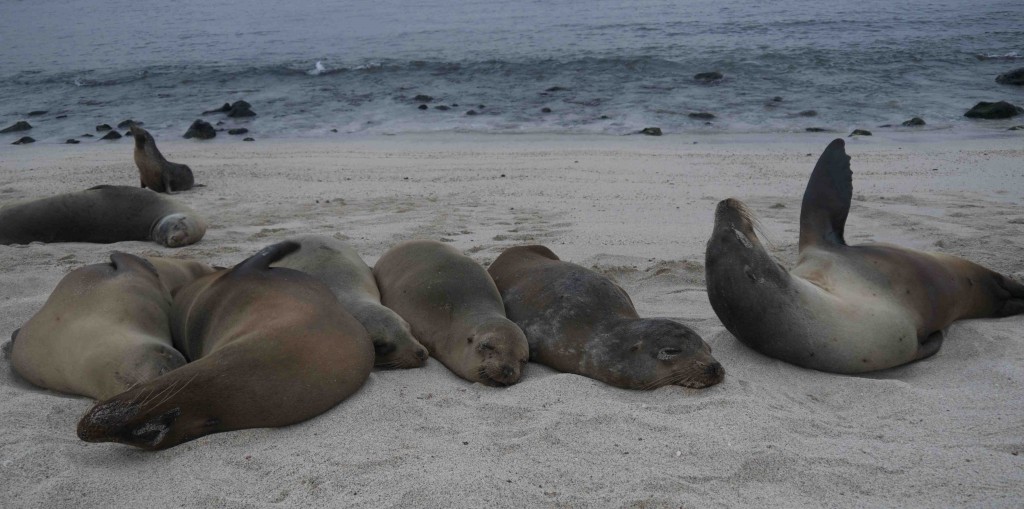Aisha Reynolds, Director of Operations and Media, Galapagos
I have to admit I have never been a morning person. When the warm tangerine glory that is the sunrise in Galapagos spreads her spectacular wings over the sailboat lined beaches and crystal clear waters each day, my curtains are always drawn in darkness.
But today on San Cristobal island, it is 5am, and I fling myself out of bed with uncharacteristic energy. Ignoring my body’s grumpy demand for an immediate hit of strong black South American coffee, I grab my camera, sunscreen, hat, and jog directly to my appointment at Playa Mann beach.
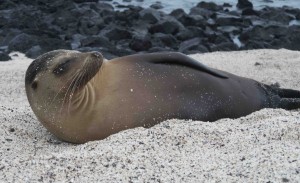 Our team of volunteers at Darwin Animal Doctors have been invited by the Galapagos Institute for the Arts and Sciences (GAIAS) to participate in a dawn population count of Galapagos Sea Lions.
Our team of volunteers at Darwin Animal Doctors have been invited by the Galapagos Institute for the Arts and Sciences (GAIAS) to participate in a dawn population count of Galapagos Sea Lions.
GAIAS was established in 2002 by the University San Francisco de Quito, with support of the Galapagos National Park Service, the Municipality of San Cristobal, and the provincial and central governments, as part of an effort for conservation while generating sustainable development in the islands. In the past years GAIAS has become the most important educational and research entity in the archipelago, developing relationships with universities from around the world, as well as with national and international governmental and non-governmental organizations working for the conservation and sustainable development of the Galapagos.
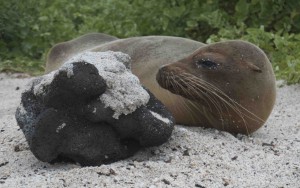 The Galapagos sea lion (Zalophus wollebaeki) is an endangered species of sea lion that exclusively breeds on the Galápagos islands. Being fairly social, and one of the most numerous species in the Galápagos archipelago, they are often spotted sun-bathing on sandy shores or rock groups or gliding gracefully through the surf. Their loud bark, playful nature, and graceful agility in water make them the “welcoming party” of the islands. Until today, I had only dared observe these rare creatures from afar.
The Galapagos sea lion (Zalophus wollebaeki) is an endangered species of sea lion that exclusively breeds on the Galápagos islands. Being fairly social, and one of the most numerous species in the Galápagos archipelago, they are often spotted sun-bathing on sandy shores or rock groups or gliding gracefully through the surf. Their loud bark, playful nature, and graceful agility in water make them the “welcoming party” of the islands. Until today, I had only dared observe these rare creatures from afar.
After dividing our group into teams, we all head off to our prospective locations, dotted around the small island. Most of the beachfronts where large sea lion communities live are protected by elevated fencing, to discourage tourists and stray dogs from interfering in their gregarious daily antics. But today only, we are permitted to slide under these fences to get a closer look.
Our task is to count the number of pups, juveniles, males and females, in order to keep close track of the total number found on San Cristobal island, and ensure the survival of the species by continuing to breed, maintain health and co-habitation with humans.
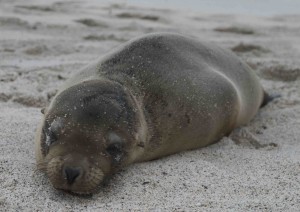 Sea lion mums are on high alert to our intrusion, at first seemingly lazy and relaxed, they have a very strong bond with their young and will fiercely protect them with vicious sounding barks if approached too closely. Pups still feeding on milk can be heard suckling greedily from a distance, so we step cautiously and respectfully around these family groupings. Alpha males, or the dominant bull, can keep an entire harem of females in their community and can grow up to 400kg (800lbs)! This dominance only lasts a few months however, before he is challenged by a newcomer. Amusingly, males who have not managed to exert their power in a group, are exiled to live in ‘Bachelor Pad’ style groups, on less appealing beaches of the Island, far away from the large harem style territory or any sign of females.
Sea lion mums are on high alert to our intrusion, at first seemingly lazy and relaxed, they have a very strong bond with their young and will fiercely protect them with vicious sounding barks if approached too closely. Pups still feeding on milk can be heard suckling greedily from a distance, so we step cautiously and respectfully around these family groupings. Alpha males, or the dominant bull, can keep an entire harem of females in their community and can grow up to 400kg (800lbs)! This dominance only lasts a few months however, before he is challenged by a newcomer. Amusingly, males who have not managed to exert their power in a group, are exiled to live in ‘Bachelor Pad’ style groups, on less appealing beaches of the Island, far away from the large harem style territory or any sign of females.
These creatures are so entertaining, each with their own strong personality, they are playful and thoroughly enjoy diving, chasing and rolling through the waves together. We literally step over piles and piles of sea lions, as others nap and cuddle in large groups, slumped over each other and squeezed together in impossible stacks like sardines. They seem to have such affection toward one another.
After an hour of our identification tasks, photographing and taking detailed notes, we have become quite overwhelmed with the pungent odor of masticated fish guts emitted by the sea lions, a scent one will never forget once experienced. It is finally time for that strong black coffee.
The total population is believed to fluctuate between 20,000 to 50,000. On this count, our team leaders from GAIAS inform us that at least for now, the population is stable. But there are many threats to these endangered, rare creatures, from shark and whale predation, ocean health and overfishing, human interference and ever expanding tourist development. These crucial weekly population counts in the Galapagos can hopefully assist us in ensuring the longevity of this spectacular species forever.

